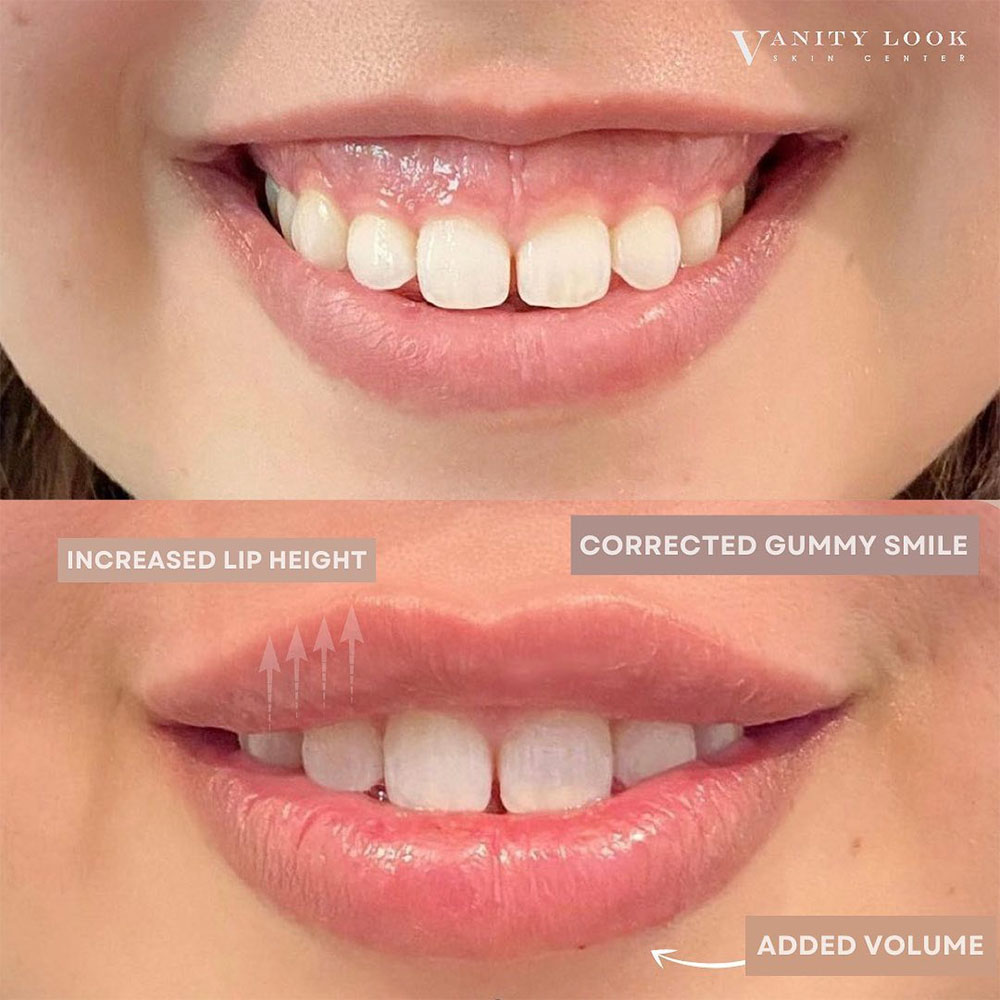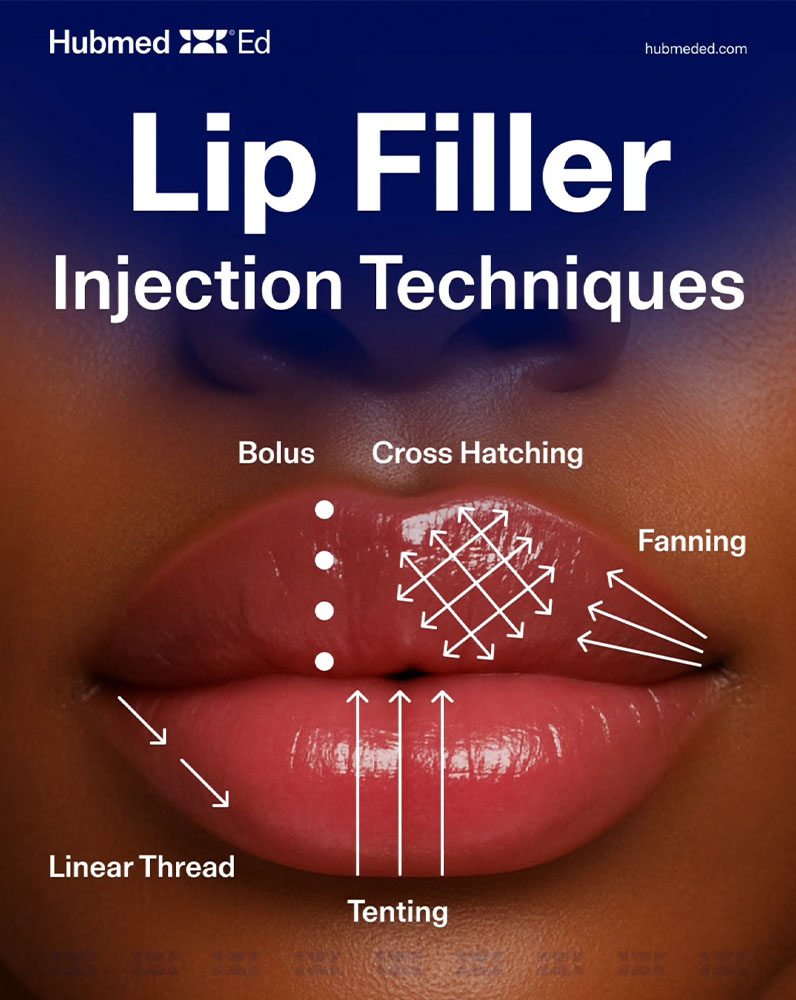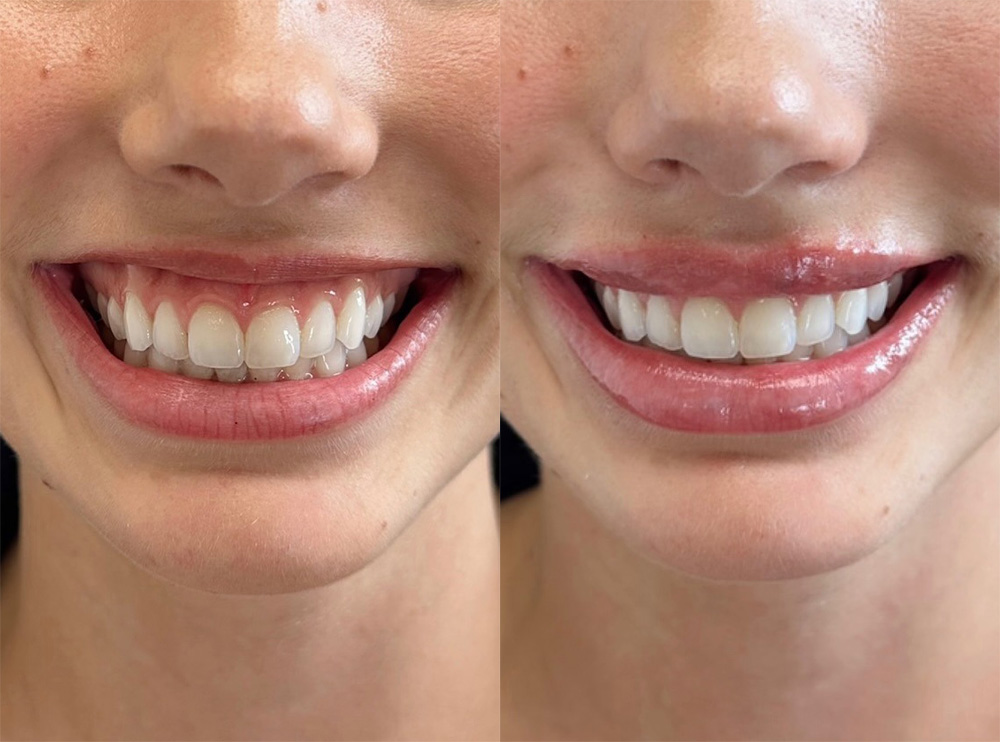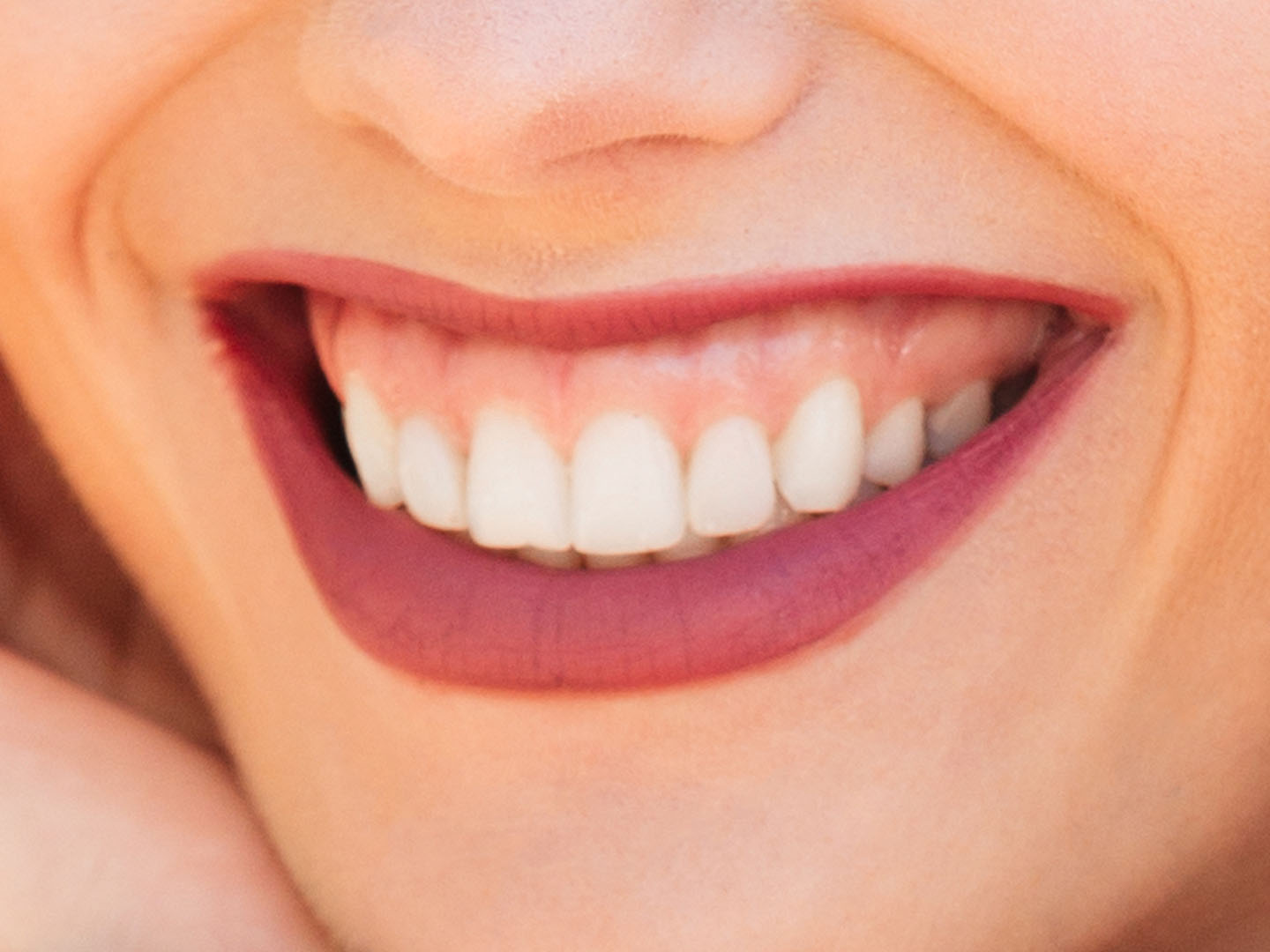
A well-balanced smile is more than just straight teeth. When too much gum tissue shows while smiling, typically more than 3 mm, it can create what’s known as a gummy smile. Although harmless medically, the appearance of a gummy smile often leads patients to seek aesthetic correction due to self-consciousness or dissatisfaction with their facial proportions.
In this guide, we’ll explore how Juvederm for gummy smile correction works, when it's the right option, and what medical aestheticians need to know about treatment planning, injection technique, and patient education.
What Is a Gummy Smile and Why It Matters Aesthetically
A gummy smile, or excessive gingival display, refers to the visibility of a significant portion of gum tissue when a patient smiles, usually anything over 3 mm. While often considered a minor concern medically, the aesthetic and psychological impact can be significant. Patients may avoid smiling in photos or feel their lips are disproportionate to their teeth and gums.
Several anatomical factors contribute to a gummy smile:
- Hyperactive upper lip: excessive elevation when smiling.
- Short upper lip: reduced lip length exposes more gum tissue.
- Excessive gingival tissue: due to genetics or orthodontic issues.
- Vertical maxillary excess: an overgrown upper jaw that increases gum exposure.
Filler for gummy smile correction is typically appropriate for soft tissue-based causes, such as a short or hypermobile upper lip. For skeletal or dental origins, other interventions (surgical or orthodontic) may be more effective.

How Juvederm Can Help Correct a Gummy Smile
Juvederm lip lift techniques work by subtly increasing the volume of the upper lip. This additional volume:
- Adds weight and structure to the lip, limiting its ability to lift excessively.
- Creates a better balance between the teeth, lips, and gums.
- Helps support the nasolabial angle, further reducing the upper lip’s range of motion.
This non-surgical gummy smile treatment is especially effective in patients with mild to moderate soft tissue-related gummy smiles. It can sometimes be used alone or in combination with Botox. While Juvederm fills and supports tissue, Botox can relax the levator labii superioris alaeque nasi (LLSAN), the muscle responsible for pulling the lip upward. The two approaches are often complementary.
Juvederm is preferable when volume deficit or lip shape is the main concern, while Botox is better suited for hyperactivity of the lip elevator muscles.
Anatomy and Injection Zones
A precise understanding of upper lip anatomy is essential for safe and effective gummy smile correction with Juvederm. One of the key muscles involved is the levator labii superioris alaeque nasi (LLSAN), which contributes to excessive upper lip elevation during smiling. By strategically placing filler, injectors can reduce the action of this muscle and support the surrounding tissue to limit gingival display.
The primary focus is on the vermilion border and body of the upper lip, where small amounts of filler can add volume and subtly elongate the lip. In some cases, careful placement in the subnasal area can provide additional structural support, further minimizing upward movement.
A thorough understanding of vascular anatomy, particularly the course of the angular artery, is crucial to avoid complications. Proper injection technique, including slow delivery and aspiration, reduces the risk of intravascular injection and supports predictable, natural-looking results.

Technique Tips for Optimal Results
What injections are good for gummy smile?
Juvederm Ultra or Juvederm Volbella are the top choices. These provide soft, flexible results that integrate well into the lip’s natural movement.
Volume and technique for the best gummy smile results
Use small volumes: 0.2 to 0.4 mL per side is usually sufficient.
- Techniques:
o Microbolus: for precise placement at strategic points.
o Linear threading: useful for even volume distribution along the vermilion.
A light hand is essential. Overfilling can make the upper lip bulky or rigid, worsening the smile’s appearance or causing duck-lip distortion.
Expected Results, Duration, and Patient Education
Patients can expect immediate softening of their gummy smile, with full results settling in over 1 to 2 weeks. Reducing the gingival display depends on the filler’s ability to support and slightly weigh down the lip.
How long does a gummy smile injection last?
Results last 6 to 12 months, depending on filler type, injection technique, and the patient’s metabolism and muscle activity.
How to manage patient expectations?
Clear communication is essential when treating a gummy smile with Juvederm. Patients should understand that while fillers can significantly improve the balance between the lips and gums, the correction is typically moderate rather than complete. The goal is to create a more harmonious smile, not to eliminate all gum visibility, especially during a full or natural smile. For some individuals, a combination approach using both Juvederm and Botox may offer more comprehensive results by addressing both volume and muscle activity. Setting these expectations early helps build trust and leads to greater patient satisfaction with the outcome.

Safety, Contraindications, and Follow-Up
As with any injectable treatment, using Juvederm for gummy smile correction requires careful attention to safety. While the procedure is minimally invasive, it is not without risks.
Potential Side Effects
Patients may experience mild and temporary side effects such as:
- Swelling
- Bruising
- Asymmetry
- Tenderness at the injection site
More serious complications, though rare, include overcorrection and vascular occlusion. A solid understanding of lip vascular anatomy, especially the location of the angular artery, helps minimize these risks.
Patient Selection and Contraindications
Juvederm is not suitable for every patient. Avoid treatment in cases involving:
- Severe skeletal causes of gummy smile (e.g., vertical maxillary excess)
- A history of permanent lip implants
- Known allergies to hyaluronic acid or lidocaine
In these cases, referral for orthodontic or surgical evaluation may be more appropriate.
Post-Treatment Care
Proper aftercare supports both safety and aesthetic outcomes. Instruct patients to:
- Avoid touching or massaging the area for 24 to 48 hours
- Refrain from strenuous activity or excessive lip movement
- Delay dental work for at least a few days
Using a cold compress shortly after treatment can help manage swelling, but direct pressure should be avoided.
Follow-Up and Assessment
A follow-up visit is recommended around 2 weeks post-treatment. At this appointment, assess:
- Symmetry
- Degree of correction
- Patient satisfaction
If needed, small adjustments can be made. Touch-ups using a conservative amount of product may further refine the result without risking overfilling.

Conclusion: Can You Permanently Fix a Gummy Smile?
While fillers don’t provide a permanent solution, Juvederm offers a safe and effective non-surgical option for treating mild to moderate gummy smiles. By carefully adding volume to the upper lip and softening its retraction, practitioners can reduce gum exposure and help patients feel more confident about their smile.
Permanent correction may require surgical or orthodontic approaches, but for patients with soft-tissue causes, filler is often sufficient and repeatable, with little downtime.
For further training, practitioners can explore aesthetic courses or dive into our advanced Juvederm courses online. Video tutorials, live cases, and lip correction modules provide additional guidance for refining gummy smile treatment.
FAQ
How to fix a gummy smile with filler?
By injecting small amounts of Juvederm into the upper lip, you can limit its upward movement and balance the lip-to-gum ratio, reducing gingival display.
What injections are good for gummy smile?
Juvederm is ideal for lip volumization, while Botox is effective for relaxing overactive muscles like the LLSAN. The combination is often best.
How much does gummy smile treatment cost?
Costs vary by region and provider, but filler-based gummy smile correction typically ranges from $300 to $800 per session.
How long does a gummy smile injection last?
Juvederm results can last 6 to 12 months, depending on the product used and patient factors like metabolism and muscle movement.
Do gummy smiles get better with age?
In some cases, gum visibility decreases slightly with age due to reduced muscle tone and lip volume changes, but not significantly enough to rely on as a solution.
Sources
- Mercado-García J, Rosso P, Gonzalvez-García M, Colina J, Fernández JM. Gummy Smile: Mercado-Rosso Classification System and Dynamic Restructuring with Hyaluronic Acid [published correction appears in Aesthetic Plast Surg. 2021 Oct;45(5):2553. doi: 10.1007/s00266-021-02229-z.]. Aesthetic Plast Surg. 2021;45(5):2338-2349. doi:10.1007/s00266-021-02169-8 https://pubmed.ncbi.nlm.nih.gov/33619610/
- Hsien-Li Peng P, Peng JH. Treating the Gummy Smile With Hyaluronic Acid Filler Injection. Dermatol Surg. 2019;45(3):478-480. doi:10.1097/DSS.0000000000001563 https://pubmed.ncbi.nlm.nih.gov/29847334/
- Diaspro A, Cavallini M, Piersini P, Sito G. Gummy Smile Treatment: Proposal for a Novel Corrective Technique and a Review of the Literature [published correction appears in Aesthet Surg J. 2021 Apr 12;41(5):638. doi: 10.1093/asj/sjz087.]. Aesthet Surg J. 2018;38(12):1330-1338. doi:10.1093/asj/sjy174 https://pubmed.ncbi.nlm.nih.gov/30010767/
*This article is intended for licensed medical professionals. All protocols, dosages, and treatment insights referenced herein are based on published literature. The content is not intended to encourage application, diagnosis, or self-treatment of unlicensed individuals, and should not be used as a substitute for the clinical judgment of a qualified healthcare provider.
Disclaimer:
This article is intended for licensed medical professionals. All protocols, dosages, and treatment insights referenced herein are based on published literature. The content is not intended to encourage application, diagnosis, or self-treatment of unlicensed individuals, and should not be used as a substitute for the clinical judgment of a qualified healthcare provider.

